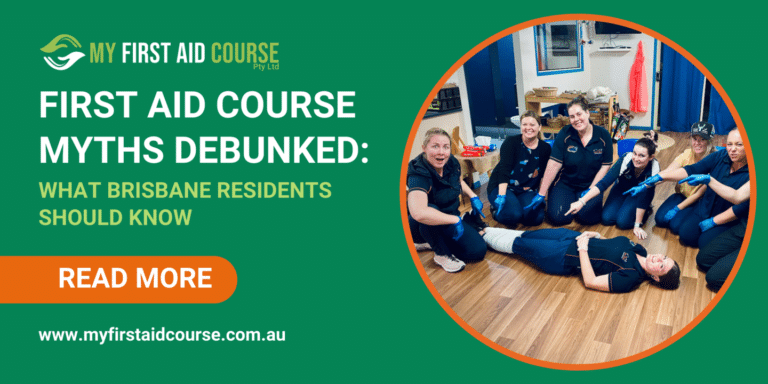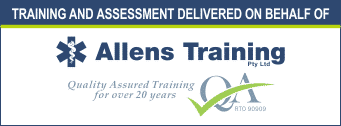Hey there, advanced first aid enthusiasts! Today we’re diving into a topic that might sound a bit technical at first, but trust me, it’s super important for anyone interested in advanced first aid. We’re talking about oxygen saturation and pulse oximetry. Don’t worry if those terms sound like a mouthful – by the end of this article, you’ll be tossing them around like a pro!
This blog is part of a series where I break down the cool stuff we cover in our HLTAID015 Provide Advanced Resuscitation and Oxygen Therapy Course . I’m writing these just like I teach – in a way that’s easy to understand and maybe even a little fun!
A Quick Trip Down Memory Lane
Before we get into the nitty-gritty, let’s take a quick look at how we got here. People have been trying to measure oxygen saturation in blood since the 1930s, but it wasn’t until the 1970s that we got the modern pulse oximeter. A clever Japanese Doctor Takuo Aoyagihttps://www.ncbi.nlm.nih.gov/pmc/articles/PMC7237228/ came up with the idea in 1974. He figured out how to use the pulsing of our arteries to calculate oxygen levels. Pretty neat, right?

Since then, these little devices have become a big deal in hospitals, especially for folks under anesthesia. These devices were formally recognised as the new standard of care in anaesthetics in 1986 in the USA. Now they’re used all over the place – in emergencies, intensive care, and even at home. They’ve come a long way in just a few decades!
What’s the Deal with Oxygen Saturation?
Okay, let’s start with the basics. Oxygen saturation (fancy folks call it SpO2) is basically how much oxygen your blood is carrying around. Think of your red blood cells as tiny delivery trucks, and oxygen as their cargo. We measure how full these trucks are as a percentage.
For most healthy people, their oxygen saturation should be between 95% and 100%. If it drops below 95%, that’s when we might need to take a closer look. Lots of things can affect your oxygen levels, like lung problems, heart issues, or even being way up in the mountains.
Pulse Oximetry: Your Oxygen Level Spy Gadget
So how do we actually measure oxygen saturation? Enter the pulse oximeter – a nifty little device that’s like a high-tech clothes peg. You clip it onto your finger (or sometimes your earlobe or toe), and voila! It tells you your oxygen level and heart rate.
The science behind it is pretty cool. This gadget shines two types of light through your finger: red and infrared. Your blood acts differently depending on how much oxygen it’s carrying. Oxygenated blood is like, “Ooh, I love infrared light!” while deoxygenated blood says, “Nah, I’m more into red light.” The oximeter measures this light show and calculates your oxygen level.
There are all sorts of pulse oximeters out there, from simple ones you can use at home to fancy models in hospitals. They’re usually pretty reliable, but watch out – things like nail polish, cold fingers, or wiggling around too much can mess with the readings.

What’s This Hypoxemia Thing?
Alright, time for a quick medical term breakdown. Hypoxemia is just a fancy way of saying “low oxygen saturation in your blood.” It’s the boogeyman we’re trying to catch with our pulse oximeter. When your oxygen levels drop below normal, you’re in hypoxemia territory. This isn’t great because your body’s organs and tissues are like oxygen addicts – they need a constant supply to function properly.
Oxygen Levels: One Size Doesn’t Fit All
Here’s something important to remember: “normal” oxygen saturation levels can vary depending on who you are and what’s going on with you:
- Grandma and Grandpa: Might have slightly lower levels, usually 94-98%.
- Kids: Usually similar to adults, but premature babies might have lower levels.
- People with chronic conditions: Folks with COPD (we’ll chat about this in a sec) might cruise along at 88-92%.
- Mountain climbers: If you’re way up high (like above 8,000 feet), even super healthy people might sit at 90-92%.
The takeaway? Always consider the whole picture when looking at someone’s oxygen levels.
A Quick Chat About COPD
COPD, or Chronic Obstructive Pulmonary Disease, is a fancy term for some serious lung issues, mainly emphysema and chronic bronchitis. In COPD, the airways get inflamed and the little air sacs in the lungs get damaged. This makes it harder for oxygen to get into the blood and for carbon dioxide to get out.

For people with COPD, oxygen levels between 88% and 92% are often their “normal.” But here’s the kicker – if their levels suddenly drop from their usual or they’re having trouble breathing, it’s still emergency time.
Also, in a first aid situation, we might not know someone’s medical history. So, as a rule of thumb, it’s usually better to give oxygen if you’re unsure. Better safe than sorry!
The Vital Signs: It’s All Connected
Oxygen saturation isn’t a lone wolf – it’s part of a crew we call vital signs. These guys work together to give us the big picture of what’s going on in someone’s body:
- Heart rate: When oxygen levels drop, the heart often speeds up like it’s trying to win a race.
- Blood pressure: Can get a bit wonky when oxygen levels are off, especially if things are really bad.
- Breathing rate: Usually picks up the pace when oxygen levels are low, like it’s trying to catch up.
- Temperature: A fever can make the body demand more oxygen, like a car engine running hot.
In first aid, always look at the whole gang together. It’s like solving a mystery – you need all the clues!
Oxygen Levels: What to Watch For and How to React
Knowing someone’s oxygen saturation level can be a game-changer in emergencies. It’s like having a crystal ball that helps us spot breathing troubles early, guide our rescue efforts, and keep an eye on ongoing health issues.
Here’s a quick and dirty guide to understanding those numbers:
- 95-100%: All good in the hood. Keep an eye out for other symptoms though.
- 91-94%: Mild hypoxemia. Time to play detective and figure out why. Maybe start thinking about some extra oxygen.
- 86-90%: Moderate hypoxemia. Oxygen therapy, stat! Get them comfy for better breathing.
- 81-85%: Severe hypoxemia. Crank up the oxygen and get ready for some serious action.
- Below 80%: Critical hypoxemia. Emergency mode activated! They might need help breathing.
Remember, these are just general guidelines. Every situation is unique, so always get professional medical backup when you’re dealing with oxygen in first aid.
Pulse Oximeter Pro Tips
Using a pulse oximeter is pretty straightforward, but here are some insider tips to get the best readings:
- Warm hands are happy hands. Cold fingers can throw off the reading.
- Nail polish is the enemy. Take it off or use a different finger.
- Keep it steady. Too much wiggling can confuse the device.
- Be patient. It might take a few seconds to get a solid reading.
When Pulse Oximeters Get Tricky
These gadgets are super helpful, but they’re not perfect. Here are some situations where they might get a bit confused reading oxygen saturation.
- Poor circulation: Things like shock or being really cold can mess with readings.
- Fidgety patients: Excessive movement is like static on a radio.
- Dark skin tones: Older devices might struggle, but newer ones are getting better at this.
- Bright lights: Too much ambient light can interfere with the sensor.
- Incorrect placement: If it’s not on right, it won’t read right.
Knowing these quirks helps you interpret the results better and know when to try a different way of checking.
Leveling Up Your Lifesaving Skills
Understanding oxygen levels and pulse oximetry might seem like rocket science at first, but it’s an incredibly valuable skill in first aid. It’s like having X-ray vision into someone’s breathing status, helping you make quick, smart decisions when it really counts.
While these devices are pretty user-friendly, proper training is key to using them right. That’s where our HLTAID015 Provide Advanced Resuscitation and Oxygen Therapy Course comes in handy. We cover all the good stuff:
- How to use and take care of the devices
- What’s normal, what’s not, and why it might be different for some people
- How to read the results along with other symptoms
- What to do at different oxygen levels
- Troubleshooting when things get weird
Just remember, you need the right qualifications to give oxygen in non-medical settings. Always stay within what you’re trained to do and follow the rules in your area.
Remember, knowing is half the battle, but practice makes perfect. So why not jump in and sign up for a course? You never know when these skills might help you save a life. And let me tell you, there’s no better feeling than knowing you’ve made a real difference when it counts.





